One of the number one problems of growing carrots is getting the seeds to sprout. If you can get them to sprout they are a very easy crop to grow. We’ve planted thousands of carrots over the years and found there are a few tricks of the trade. Additionally we’ve come up with 3 foolproof methods for Planting Carrot Seeds- but first let’s start with the basics.

This post contains affiliate links. Full disclosure can be found here.
Best soil for carrots
Carrots grow best in soils with a pH range of 6.0 – 6.8 (source) Additionally, a well draining, loose, and fertile soil helps the carrots to grow long straight roots.
When to plant carrots
Carrots can be sown when soil temperatures reach 40ºF. Optimal germination occurs at soil temperatures of 55-65ºF. Carrots are a cool weather crop. They grow best in cooler temperatures. In most areas this means plant spring and late summer for a fall harvest.
While it is possible to plant carrots in summer, it is not recommended for a beginner gardener. Soil temperatures above 80ºF will result in reduced germination rates (fewer seeds are able to sprout). Additionally, once daily weather temperatures reach 80ºF and above the carrots are more likely to develop bitter flavors and a tough texture.
How to prepare the soil for planting carrot seeds
As with any planting, the first step is to test your soil. If you don’t know how to test your soil and need a recommendation, you can find my favorite HERE along with how it works. Once the results are back, add any recommended amendments before planting carrots.
If you have heavy or compacted soil, broadforking the planting area will allow the roots to penetrate deeply in the soil. Alternatively, if broadforking isn’t an option plant a half long variety of carrots like Danvers 126. They don’t grow very deep but will grow wide making harvest easier and forking of roots less prevalent.
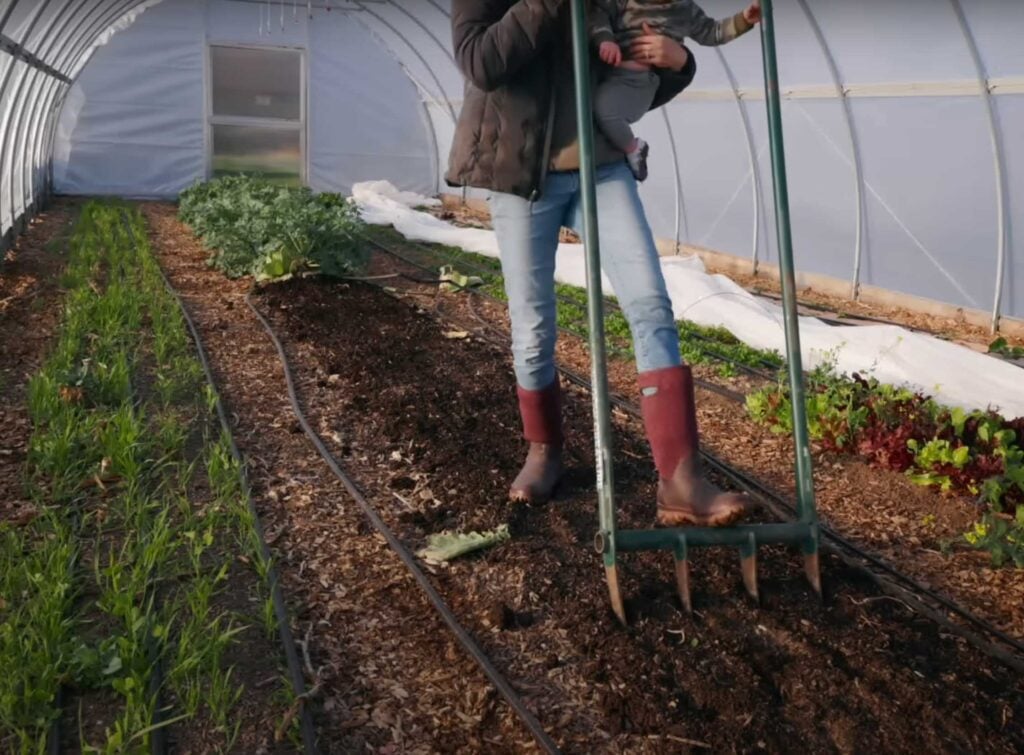
Since carrots grow best in fertile soils, add an inch or more of well rotted compost across the surface of the planting area.
Do not add nitrogen, or 10-10-10 fertilizer unless your soil test requires it. The addition of nitrogen, even organic, will make beautiful, large leafy plant tops but small carrots.
Rake the soil so it is smooth and even.
Plant Spacing for Carrots
Mark rows. Carrot rows should be 8-10 inches apart within a garden bed. In a 30 inch wide garden bed, I plant 3 – 4 rows. If planting in single rows, plant 16-24 inches apart.
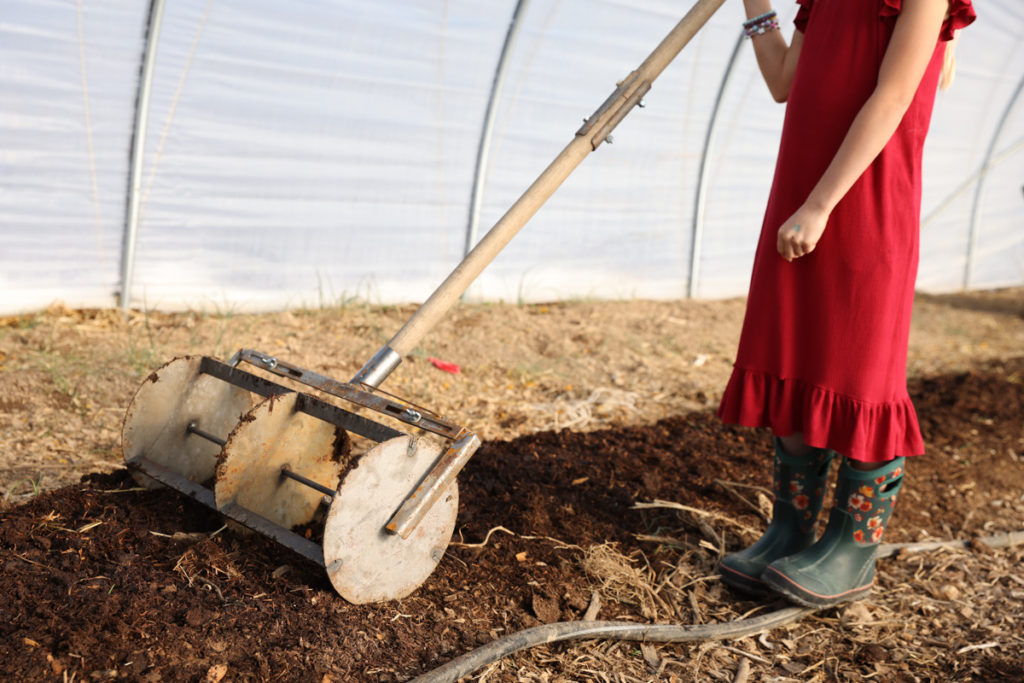
Hand Planting
Dig a small furrow, ¼- ½ inch deep and 2 inches wide.
Within each row, carrots should be planted ¾-1 inch apart.
Cover seeds with soil and press lightly.
Mechanical Seeder (Jang or Earthway)
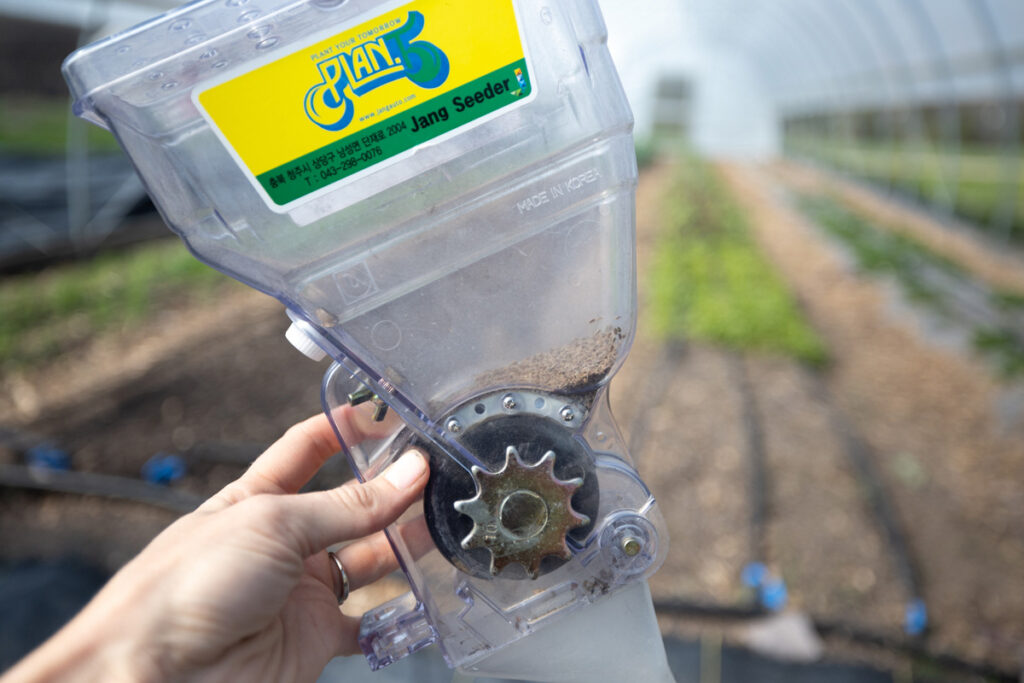
Adjust the depth so it’s ¼- ½ inch. If using an Earthway seeder, use the carrot plate. For a Jang JP-1, I use XY-24 roller.
How to Water Carrots to get them to Sprout
The pivotal part of planting carrot seeds so they sprout is making sure they stay moist the entire time. The soil cannot dry out and it definitely should never form a crust.
After initially planting seeds, water the planting area. How you get the carrots to stay moist is the key to success. Now for the 3 Foolproof Methods for Planting Carrot seeds!
#1 Use Burlap to Cover the Soil
If I’m planting a small area of carrots, I use burlap to cover the soil. It helps the soil to stay moist for a longer period of time.
It acts as a protection layer for the carrots while still allowing the airflow and light. Light is not necessary for carrot germination but it can be a benefit if you are forgetful. Read on, and you’ll find out why.
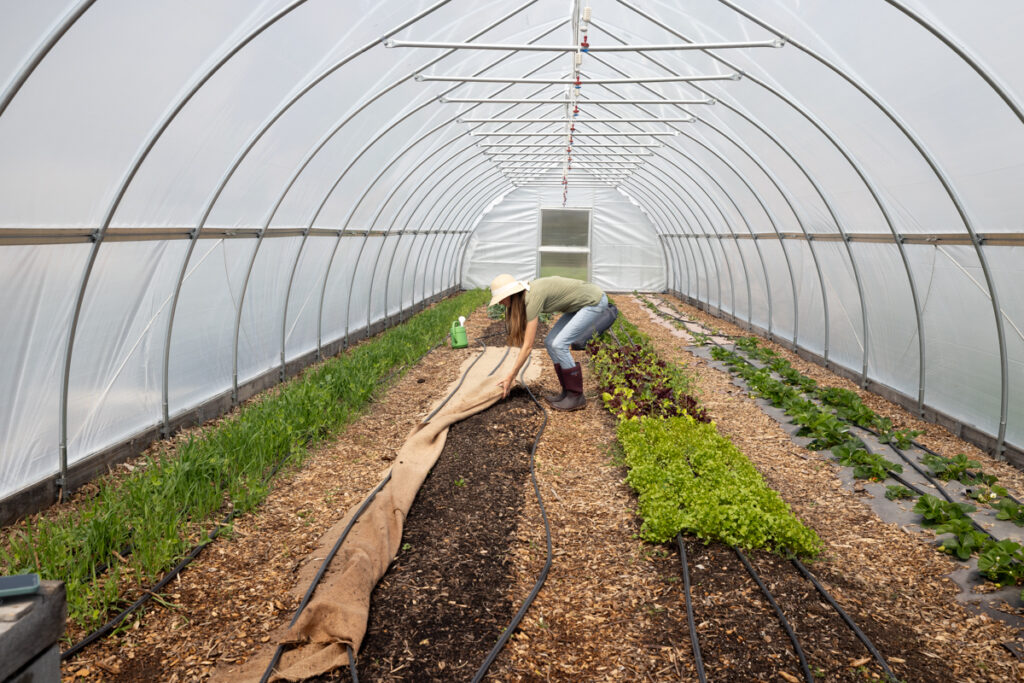
The area of planted carrots and burlap may need to be watered so the soil stays moist. Usually every 2 days having a sprinkler on for 15 minutes is sufficient. But of course, do your own spot checks by lifting the burlap and seeing if the surface of the soil looks dry. If it does, it’s time to water.
Using burlap to cover the soil is the most foolproof of all the methods because even when carrots start to germinate, they can still get light if you are late to taking off the burlap.
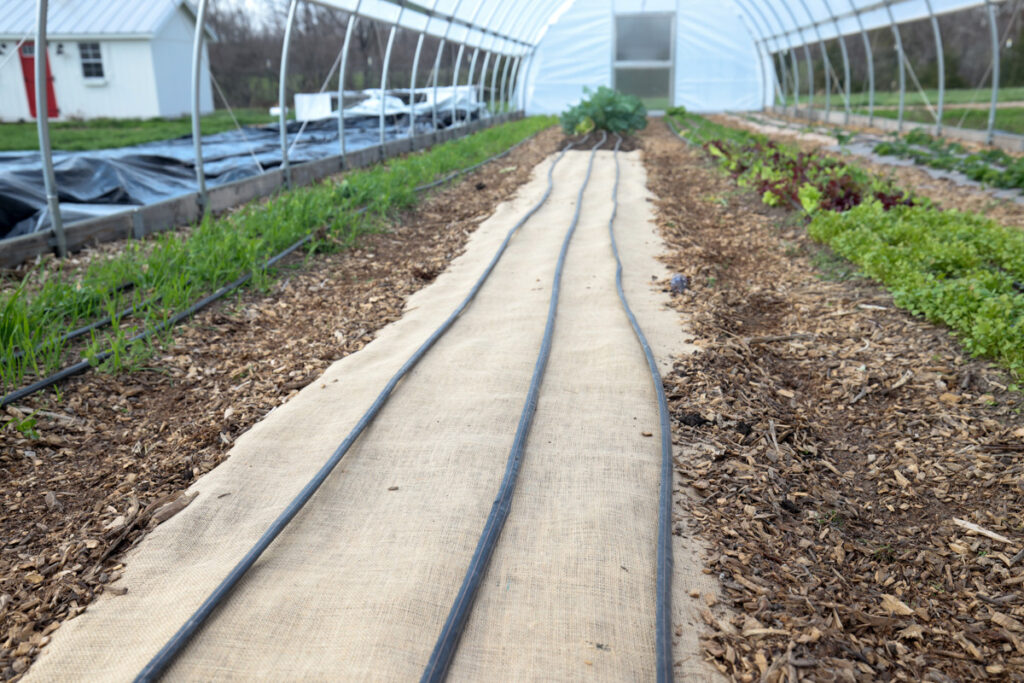
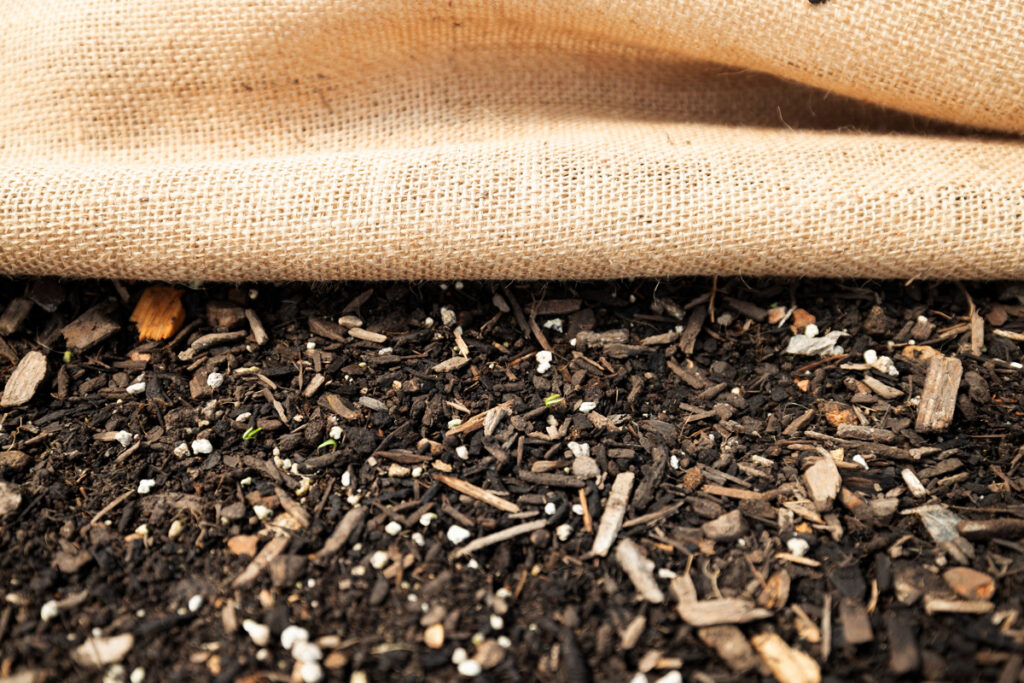
Carrots germinate anywhere from 5-21 days depending on the soil temperature. If planting them at an ideal time, they usually germinate in about 10 days. Watch closely for signs of carrots beginning to sprout. Once the carrots sprout, remove the cover.
Check out the video below to see how we prep a carrot area with burlap, plant the carrots, cover it, then water.
#2 Use a Silage Tarp, White Side Up
If you are planting a large area of carrots, or need carrots to germinate in hot summer conditions use a silage tarp with the white side facing up (or visible). The white side of the tarp reflects heat and keeps the ground underneath cool.
Additionally, carrots planted and covered with a silage tarp allows the soil to retain a lot of moisture.
If you haven’t heard of silage tarps before they are large tarps made especially for agriculture and gardening. They are made to last in outdoor conditions. I buy silage tarps HERE. The idea behind them is to cover large garden areas but they can be cut to any shape or size.
For this method, after planting the carrot seeds and watering thoroughly, cover the area with the white side up silage tarp. Add sandbags or weights to the sides of the tarps so they don’t blow away.
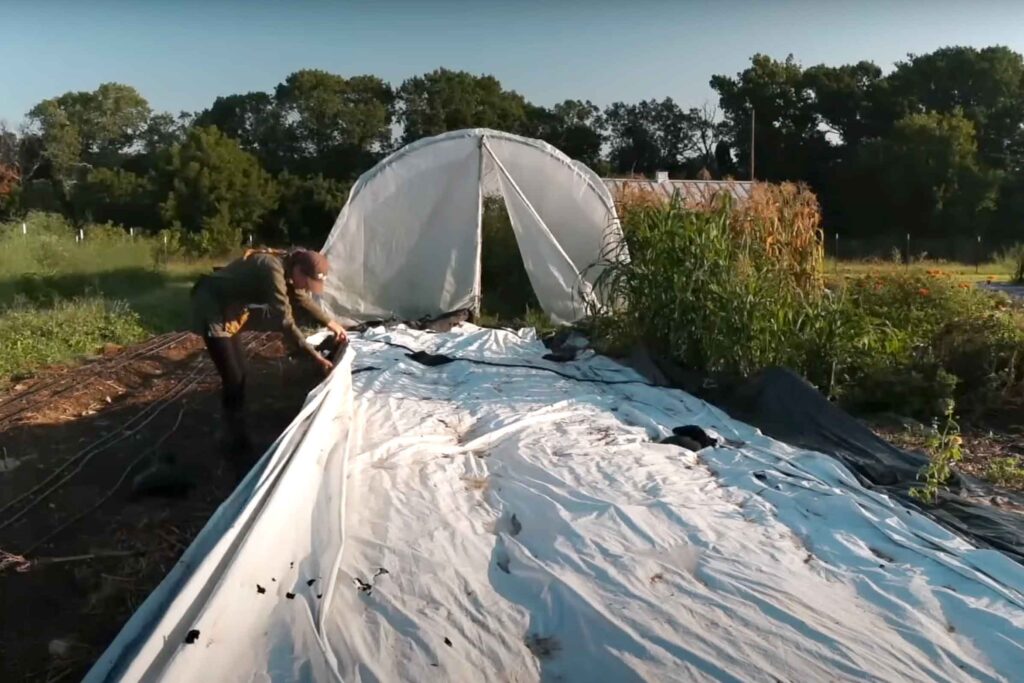
No additional water is needed during the germination period as long as you watered enough initially. After 5 days, start checking under the silage tarp for signs of carrots sprouting. Check every day. As soon as you see germination, take off the silage tarp and water the carrots.
If you are late at taking the silage tarp off, you can risk the carrots dying from lack of sunlight.
For a visual on how to grow carrots using silage tarps. Check out the video below:
#3 Use a board
A very simple method of getting carrots to germinate is simply placing a board over the top of the soil. This method works well if you have a small area of garden planted with carrots.
If you struggle with slugs or pill bugs which like dark, damp areas, place something underneath like small wood blocks or bricks so the board is lifted above the ground by a small amount.
When the board is placed directly on the soil surface, the soil will retain moisture and will not need much water if any. If the board is elevated then check underneath it periodically. If the surface is dry, water the area by removing the board and then replacing it on top again.
After 5 days, start checking carrots for signs of germination. Check every day until you see them sprouting. Once a few carrots sprout remove the board, then water carrot seedlings and watch them grow 🙂
Summary
It takes good cultural practices to get carrots to sprout. Preparing the soil properly, using fresh new seeds, planting at the right depth, and covering them.
However, the part that most get stuck on and they reason they won’t germinate well is because carrots take a long time to sprout and they need to stay moist the entire time.
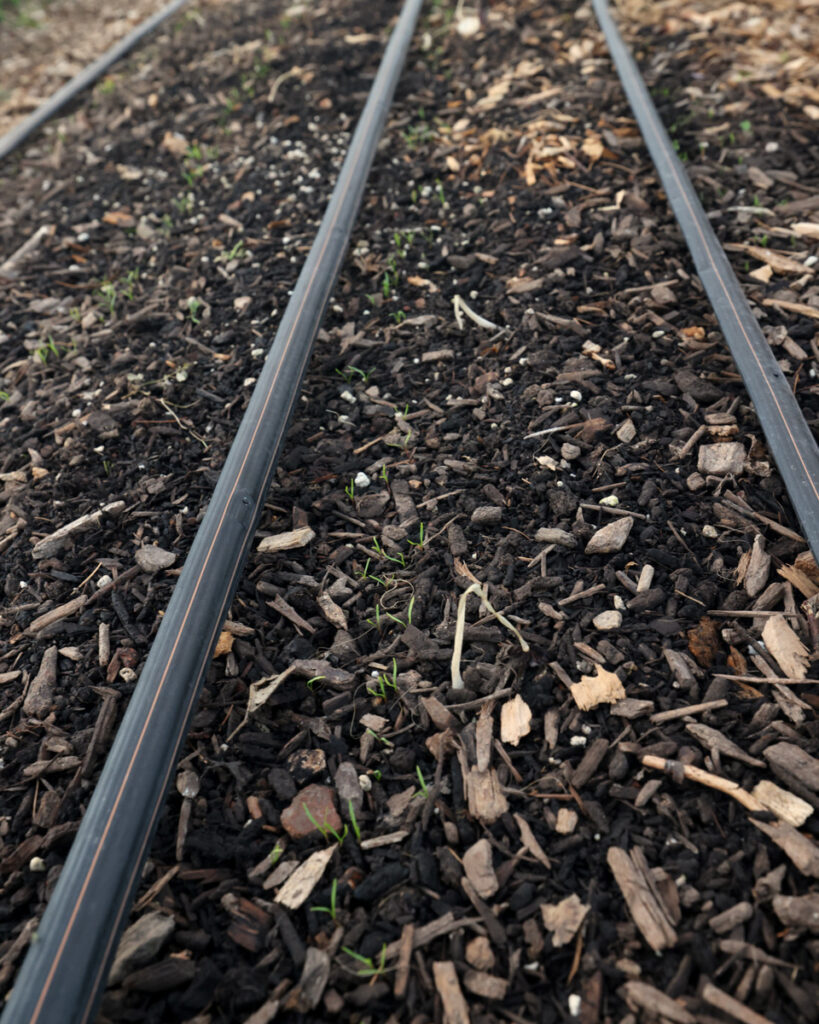
Therefore, the key to maximum carrot seed germination is covering the soil after planting so it can retain moisture throughout the germination process. I have 3 tried and true Foolproof Methods for Planting Carrot Seeds and Covering them.
- Burlap
- Silage Tarp (White side up)
- A Wood Board
I have consistent success and nearly 100% germination with these methods.



2 comments
Do you harvest spring carrots before it gets to be 80 degrees so they don’t get bitter? Mine get bitter every year and I resolved to only do fall carrots. If there is a way to keep spring carrots from getting bitter I’d love to know!
I’ll have to try some of these methods. The only carrots I’ve been able to germinate well were sprinkled in October from carrots that went to seed. I covered the bed with pine needles and they came up happily in February in Utah.
We drove to Arkansas to see the eclipse! I thought of you and your homestead!